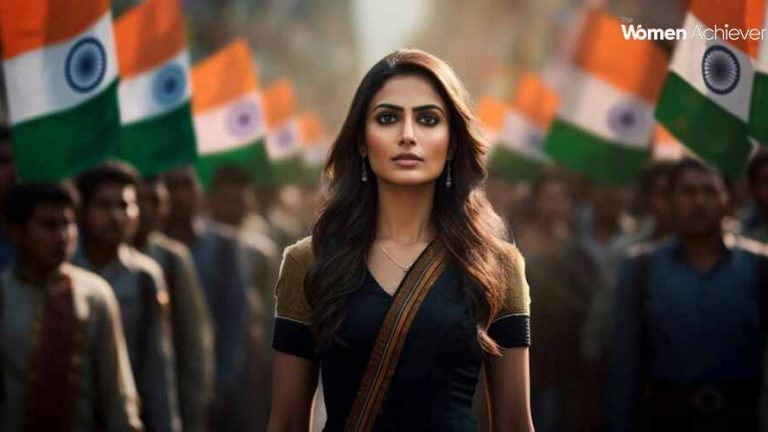Breaking Barriers: The Evolution of Women’s Participation in Indian Politics
India’s political environment has seen a transformation as women have progressively risen to positions of power and influence. This development underscores the particular difficulties women have in the political sphere while reflecting the nation’s larger progress toward gender equality.
1. The Pre-Independence Period: Establishing the Scene
In India, women’s political involvement has its origins in the time before independence. In the fight for independence, women like Kasturba Gandhi, Annie Besant, and Sarojini Naidu were crucial. Their participation in campaigns like the Non-Cooperation Movement and the Salt March demonstrated their capacity as organizers and leaders.
Important turning points:
- The Women’s Indian Association (WIA) was founded in 1917.
- 1930: The important role that women played in the Civil Disobedience Movement.
2. The Constitution and Representation in the Post-Independence Era
The 1950 Indian Constitution established the foundation for women’s involvement in politics and guaranteed equality. One important step in guaranteeing women’s representation was the reserving of seats in municipal bodies.
Important numbers:
- India’s first female prime minister, Indira Gandhi, served as a symbol of women’s leadership at the highest level in 1966.
- In 1963, Sucheta Kripalani became Uttar Pradesh’s first female chief minister.
3. The Emergence of Female Leaders in the Late 20th Century
Significant female leaders began to emerge in the latter half of the 20th century:
- Mamata Banerjee, Jayalalithaa, and Mayawati reshaped regional politics.
- Women started to question established conventions and enter fields that had previously been dominated by men.
Important developments
By requiring a 33% reservation for women in Panchayati Raj institutions, the 73rd and 74th Constitutional Amendments (1993) greatly increased involvement at the grassroots level.
4. The 21st Century: Shattering Boundaries
Women are increasingly represented in state assemblies, parliament, and important administrative positions in the new millennium. Important roles in national governance have been assumed by leaders such as Nirmala Sitharaman, Sonia Gandhi, and Smriti Irani.
Current patterns:
- increased participation in the Rajya Sabha and Lok Sabha.
- For many political activists, advocating for a 50% reservation for women in legislative bodies continues to be a top priority.
5. Obstacles and the Path Ahead
Notwithstanding advancements, women in Indian politics still confront obstacles like:
- Patriarchal resistance: Discrimination based on gender still exists, particularly in rural regions.
- Violence and harassment: Women frequently feel uncomfortable in political settings.
- Underrepresentation: The proportion of women elected to higher positions remains low.
Moving forward:
- supporting women’s political education and leadership development.
- bolstering regulations to guarantee governance that is gender-sensitive.
- increased cooperation between the government and civil society to give women more political influence.
Conclusion: The development of women’s political involvement in India is evidence of their tenacity and willpower. Even though there has been a lot of progress, more work needs to be done to attain full equality. In addition to representing advancement and hope, Indian women leaders encourage the next generation to shatter stereotypes and rethink leadership in a multicultural and democratic country.






Add comment